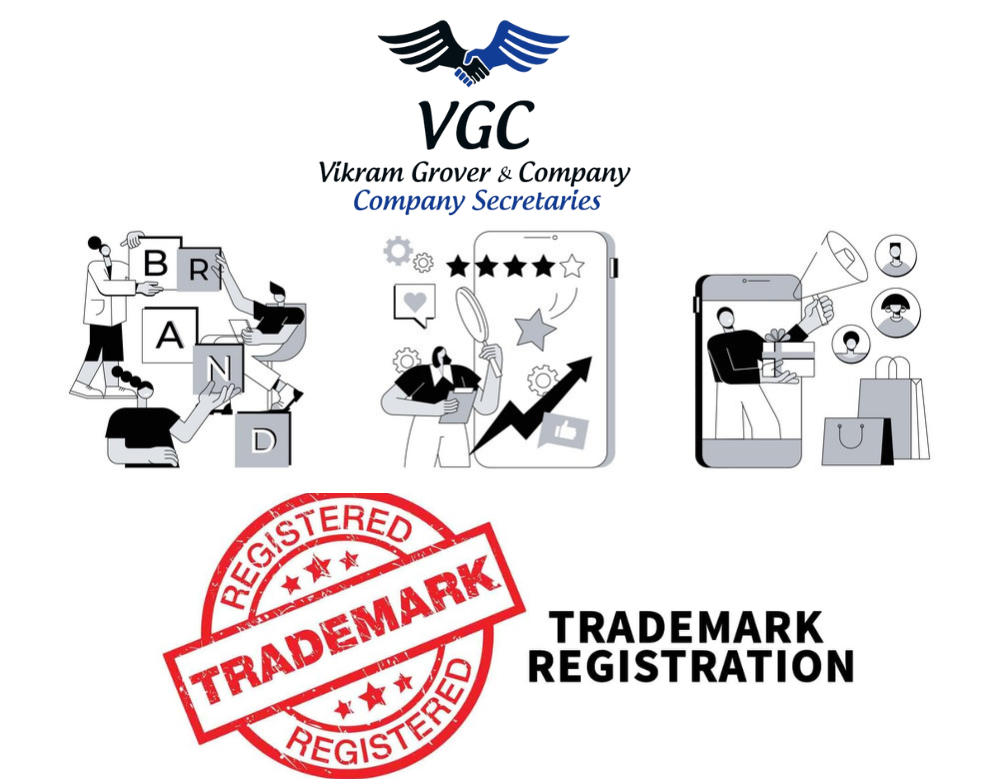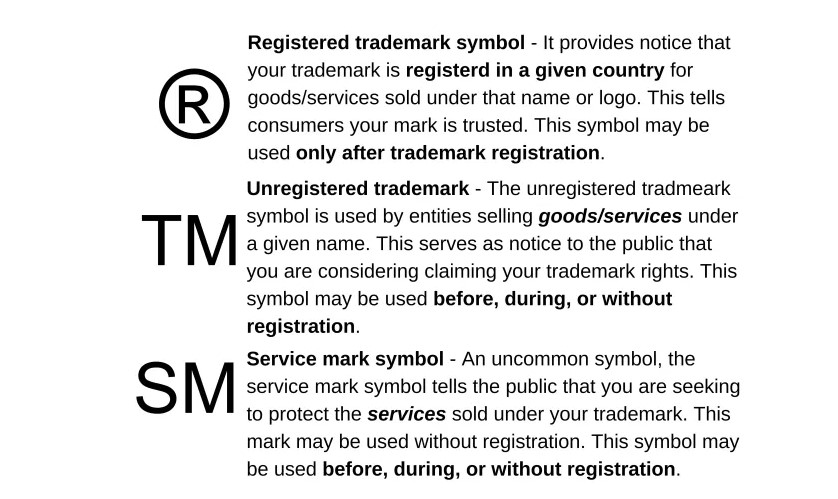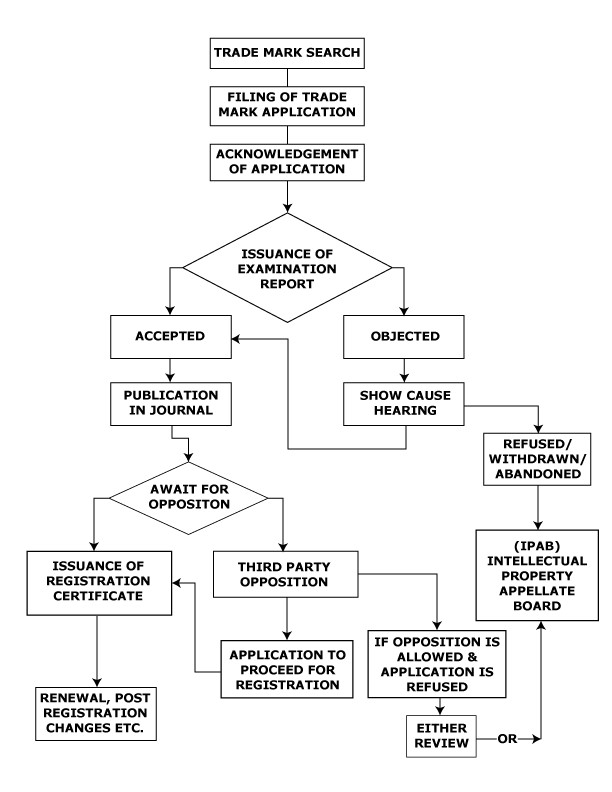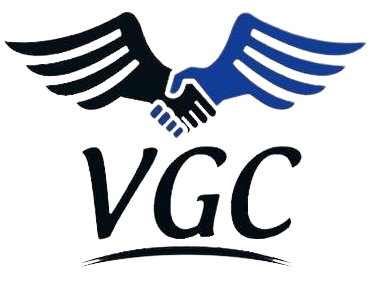
Trademark Registration Process: A Step by Step Guide
Overview
Trademark Registration plays a vital role in enhancing the business image and goodwill. Besides, this registration ensures the unique positioning of goods and services, thereby enabling businesses to reap more profit. In general, Trademark registration serves as a legit instrument that provides comprehensive fencing of the company's intangible assets such as brand name and logo against possible infringement.
When a trademark is registered, the owner is given the only right to use it on goods and services. A legal procedure must be followed in order to register a trademark. One cannot claim that a mark is covered by statutory protection without registration. This page would cover every aspect.
What is Trademark Registration?
In India, the Trademark Act,1999 permits you to register a trademark. It allows for exclusive ownership rights and prohibits others from using the mark, favoring the registered mark's owner. Once the brand begins to gain attraction in the marketplace, trademark registration offers the business a host of benefits. In the long run, a trademark may provide a distinctive brand for the goods and services. When compared to generic items, the branded products are effective in attracting customers’ attention. It shields your brand from repetition or duplication of a goods or service by competitors or other persons.
Getting Trademark registration is a tedious affair considering the quantum of compliances presented in the prevailing Act. Presently, it is governed by the Trademark Act, 1999, which lays down various provisions relating to registration, eligibility criteria, and type of rights accessible to the owner.
There are 45 trademark classes and all the goods and services are categorized across these classes. You need to be very careful while picking the classes as it will determine the validity of your trademark registration for your business’ products/services. If your business operates across different goods/services that fall under different classes, you have to ensure that you can apply for a trademark online under all the applicable classes.
Types of trademarks that can be registered in India
A trademark refers to a brand or a logo that distinguish one's product from others. Trademark is the legal term for "intellectual property".
Trademark can be a word, name, logo, tagline, symbol, image or a combo of these elements. A trademark identifies the brand owner of a specific product or service.
Trademark Symbols

What is the Trademark Registration Process in India?
You can finish the trademark registration process in India by reading-
Trademark Public Search
1: The first stage in the enrollment process is choosing a trademark.
2: It is advisable to check the trademark registry by trademark public Search to make sure the proposed trademark does not conflict with any already-registered marks.
3: Either the trademark office or an internet portal can be used for the search.
4: To get around the statutory limitations on such a process, it is advisable to seek professional advice from knowledgeable attorneys. After thorough investigation, the registration application may be submitted in the required format.
Filling of Form TM-1
Cost Involved: Rs. 4,500/9000 per application depend on type of applicant plus the attorneys’ trademark registration fees.
Step 1: The following information is included with a trademark registration application:
- “Mark” was chosen as the registration name.
- Information about the owner of a trademark.
- Goods and services description according to trademark class
Step 2: The trademark applicant may file their application both offline and trademark registration online.
The applicant must have a Class III Digital Signature Certificate for an trademark registration online application. In case application is filled by trademark attorney than there is no need of Digital Signature Certificate of Applicant.
Step 3: After the formality check pass, the registrar will check to see whether the proposed mark conflicts with any already-registered marks after receiving the trademark registration application. The registrar will also check outstanding applications to make sure no one is making the same request twice.
Step 4: The registrar may express doubts about the validity of the application and may even inform the applicant of such doubts. Examination report will be issued in that case. A reply of examination report must be provided by the applicant to the registrar within 30 days.
Step 5: Post Examination Procedures= After the hearing process, if the examiner is fully satisfied, can accept the mark and forward it for publication in the Trademark Journal or can refuse the application if any objection is still there.
Step 6: Publication of the Trademark Application = After the examiner has accepted the application, it will be published in the Trademark Journal which will remain there for 4 months. Advertisement of such an application is done so that within the time period stated above, any third party can see it and if they want can file an opposition against the applicant.
Step 7: Notice of Opposition = Within four months of the first date of appearance, any person may file a notice of opposition to a trademark that appears in the trademark journal. It must be filed on Trademark Form 5 in the prescribed format and with the applicable fees.
Step 8:. Registration = The last step is to get the certificate of registration. In case where there is no opposition or any false opposition filed, after 4 months of publication period is over, within 7 days an auto- generated registration certificate will be issued to the applicant by the trademark registry office which needs to be renewed after every 10 years for keeping it alive.
For logo registration, the applicant must provide the logo
BELOW CHART IS REPRESENTATION OF PROCESS OF TRADEMARK

Use of Trademark
Once you have obtained trademark registration, you may use the “R” symbol, which has a ten-year validity period.
Documents Required for Trademark Registration?
Trademark registration documents-
The following paperwork is required when requesting a trademark:
Note that original papers are not required to be submitted as part of the trademark application procedure. The criterion could be met by scanning a copy of the original document. Thus, it become important to categorize the applicant first. Applicant can be categorized as –
Thus, it become important to categorize the applicant first. Applicant can be categorized as
1. Individual
2. Sole proprietor
3. Partnership firm
4. LLP
5. Company
INDIVIDUAL OR SOLE PROPRIETOR– In India, any individual, whether an Indian or a foreign national, can readily register a trademark. The formation of a legal body or a corporate entity is not required to register a trademark. Furthermore, the paperwork required to register a trademark in a proprietorship’s name are the same as those required to register a trademark in an individual’s name, as follows:
1. PAN Card of individual or sole proprietor
2. AADHAR Card of individual or sole proprietor
3. Trademark description – description of goods or services
4. Form -48 (POA)
5. Mobile no.
6. Email id
7. Date of use
8. GST (if any)-
9. LOGO (if any) except in case of registering of word mark, mention the logo if any logo is there,
PARTNERSHIP FIRM- Documents required for registering trademark on behalf of partnership firm are –
1. KYC of all the partners such as PAN Card, Aadhar card etc.
2. GST (if any)- if the partnership firm has taken GST in its Name , it must be used.
3. LOGO (if any)- except in case of registering of word mark, mention the logo if any logo is there,
4. Trademark description- description of goods or services
5. Form -48 (POA)
6. Mobile no.
7. Email id
8. Date of use
9. MSME (if any)
10. Partnership deed
COMPANY-
Documents required for registering trademark on behalf of company are –
1. KYC Of partners – of all the partners such as PAN Card, Aadhar card etc.
2. GST (if any) if the Company has taken GST in its Name , it must be used.
3. LOGO (if any)- except in case of registering of word mark, mention the logo if any logo is there,
4. Trademark description- description of goods or services
5. Form -48 (POA)
6. Mobile no.
7. Email id
8. Date of use
9. MSME (if any)
10. COI-certificate of incorporation
Benefits of Trademark Registration
- Provide much-needed thrust to a brand value which could further be translated into increased sales for the company.
- Facilitate exclusive ownership right to the owner, i.e. ensuring complete fencing of concerned IP asset
- Enable companies to reduce marketing campaign budget for promoting particular goods and services.
- Create IP assets for the company that can be sold, assigned, franchised or commercially contracted
- Vest owners with rights to sue the infringer in case of trademark infringement
How Vikram Grover and Company (VGC) Helps you in Trademark Registration Process in India?
VGC Service Range includes:
- A detailed search on the Trademark website about the probability of trademark getting registered.
- This search aids in establishing your brand eligibility to start the trademark registration procedure in India.
We will advise you on which classes to apply for:
- Making and submitting an application for trademark registration India
- Producing an affidavit to prove that a mark was previously used
- Composing a response to a third party’s opposition or objection to a Trademark Registry application
- Hearing attendance
Our other areas of service include:
- Support with Modifications to a trademark application or registration
- Assistance with the renewal of registered trademarks
- Support with the creation of assignment deeds, franchising and licensing agreements, and other legal papers.
Conclusion
When starting a business, registering a trademark should be a top priority. It will safeguard a business from the start, ensuring its long-term prosperity. It is critical to protect a startup from the outset to acquire a competitive edge and avoid financial loss in the future. A trademark types as mentioned above can be Images, designs, and even statements. Since a trademark is considered intellectual property, it aids the business in protecting its intangible assets from potential exploitation and infringement. A registered trademark is a piece of intellectual property that guards against infringement of your business’s goods and/or services by other parties. Your products and services should have more brand value as a result of using a trademark, which should help improve brand awareness.
You may boost your company’s total worth, goodwill, reputation, and net worth in the market by registering a trademark in India. We can't see any reason why you should not get your trademark registered, can you? Do let us know your thoughts in the comment section below.

.png)



